Educational Outreach '06
The visual nature of the technology used in this research, as well as its
focus on the study of a fascinating marine mammal, provides an ideal
vehicle for math and science education for young people.
For the past six years, Eckerd College
has participated as a host institution for the
National Youth Sports Program (NYSP).
NYSP enables youth from low-income families to enhance the quality of their live
s through
active participation in sports and educational activities.
Each year, the Eckerd NYSP program serves bewteen 250 and 300 participants,
between the ages of ten and sixteen. Most of the students are African-American.
As an NYSP institution approved for math and science education, Eckerd College c
urrently
provides a portion of hands-on class sessions which focus on these topics.
In cooperation with the Eckerd College NYSP program, Professor Kelly Debure developed
and conducted a one-hour hands-on educational laboratory experience to
introduce basic mathematical computations in the context of digital imaging.
In a computer laboratory on the Eckerd campus, the students learned how
digital images are represented in the computer.
They learned about the representation of color in the computer, and the differences
bewteen additive color (emitted light) and subtractive color (reflected light).
They used the GNU Image Manipulation Program to experiment with color on the computer.
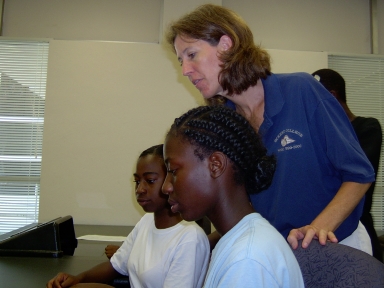
|

|
|
NYSP Students in the computer laboratory learning to use the GNU Image
Manipulation Program.
|
|
They also learned about the mathematics behind basic imaging modifications, such as
the creation of a digital negative, brightness adjustment, contrast enhancement and
the use of digital filters to create special effects such as embossing. We took
photos of each group of students and they used the images to explore other
special effects possible with digital imaging software.
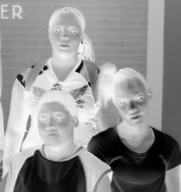
|
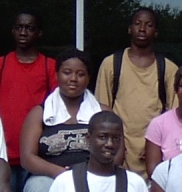
|
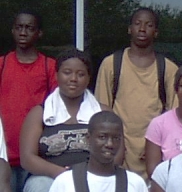
|

|
|
Left to right: Digital negative, brightness and contrast increase (before and after)
and use of digital filtering to achieve an embossed effect.
|
|
The younger students experimented with using a digital camera
as some had no previous experience
with digital media. Some of the older students learned how to "clone" areas of a
digital image to remove unwanted features from an image. All of the students seemed
to enjoy learning how to use basic cut and paste utilities to paste the face of one student
over another, creating "digital twins" in the class photos.
Next year, the hands-on class sessions will review some of the material from this year,
and introduce new concepts such as image resolution and aliasing. An additional course
module will be developed to present the use of imaging techniques for the identification
of dolphins. Students will have an opportunity for more hands-on experiences using the
software developed under this grant, to identify individual dolphins from digital
photographs taken in the wild.
In 2006, the course module was delivered to approximately 175 students
from the NYSP program in eight groups over a two day period.

|

|
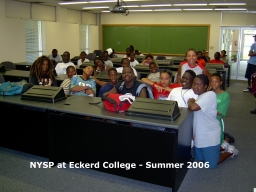
|
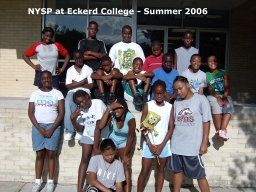
|
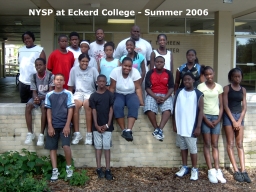
|
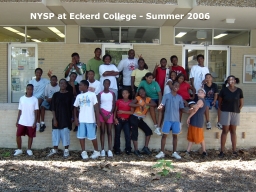
|
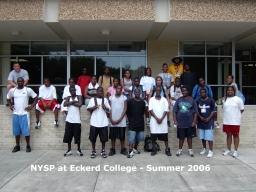
|

|
|
Students, ages 10-16, who participated in the NYSP workshop on
image processing and manipulation - Summer 2006
|
|
|
